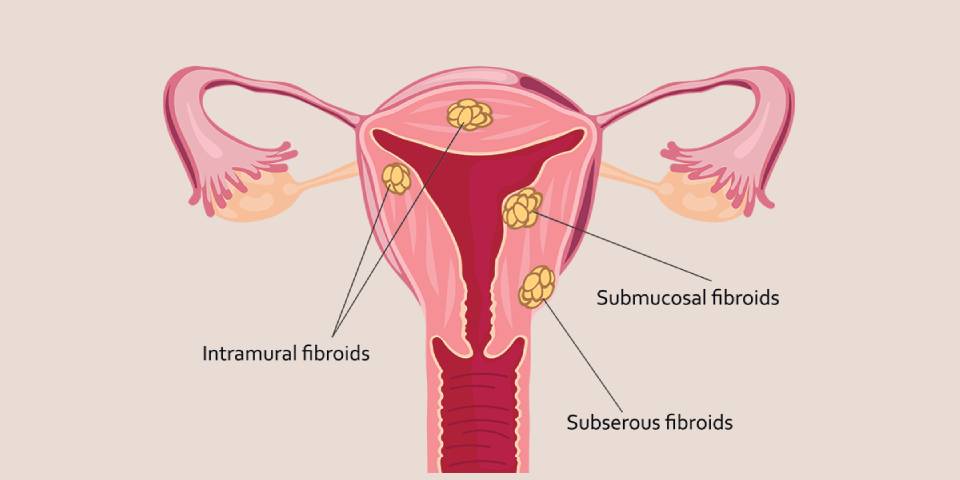What is Endometriosis?
Endometriosis is a medical condition that develops in adolescent girls & women when the endometrium, an inner lining tissue of the uterus, begins to develop out of the uterus. Endometrium tissues are formed up of endometrial glands and stroma. These tissues typically grow in the inner lining of the uterus and shed off during the menses.
What are the usual symptoms of Endometriosis?
Excessive pelvic discomfort is the primary and most prevalent sign of Endometriosis. A woman with endometriosis experiences unusual pain during menses. You may feel this pain in various ways,
- Painful menses: During menstruation, most women experience slight pain, cramping, and discomfort. Endometriosis, on the other hand, may cause slight or more menstruation pain and cramps. This pain may manifest between the menstrual cycles. In addition, women begin to have back and abdominal pain before or after menstruation. It may restrain her from performing her routine activity. It is also termed dysmenorrhea.
- Painful intercourse: Women with endometriosis might feel pain during or after sex. It is linked to deep infiltrating endometriosis (DIE)
- Infertility: if you are diagnosed with infertility, then, Endometriosis can be the reason.
- Recurrent miscarriages
- Heavy bleeding: Endometriosis can often cause heavy menstrual bleeding during and between the menstrual cycles.
- Painful bowel movements and constipation: A woman with Endometriosis may experience unusual bowel movements or constipation, especially during the menstrual cycle.
- Painful urination: Bladder endometriosis makes it difficult to pee. Women may feel a burning sensation or irritation while urinating. This is because she may have blood in her urine.
- Rectal bleeding, although this is uncommon.
- Other: Those with endometriosis, especially during menses, may feel bloated, and have body aches, weakness, diarrhea, nausea, etc.
Endometriosis Treatment in Punawale, Pune:
There is no scientifically proven treatment for endometriosis. However, the following medications or surgeries may provide relief: Dr. Shraddha Galgali Provides the treatment below treatment for endometriosis at Punawale
- Pain relievers: To help alleviate pain, Dr. Shraddha Galgali, our skilled gynecologist in Punawale, may prescribe pain relievers such as nonsteroidal anti-inflammatory drugs. If you still do not feel relieved, you can take personal measures such as taking a warm shower and performing a hot fomentation technique on the belly. Regular exercise can also help with the pain.
- Surgery: Surgery is the only option for treating this condition for some women. During the surgery, the doctor removes the affected tissue from the body. Women who have had surgery may be able to conceive again. At Dr. Shraddha Excella Womens Care Clinic our experts may utilize one or more of the following surgical procedures to treat endometriosis:
- Laparoscopy: It is a minor surgical procedure in which the doctor inserts a laparoscope, a thin tube with a lens and a light, into an incision made in the abdominal wall. Often, the doctor can remove endometrial growths by looking into the pelvic area with the laparoscope. This procedure is also used to diagnose endometriosis accurately.
- Laparotomy: It is a more invasive surgery that helps remove as much of the displaced endometrium as possible while preserving healthy tissue.
- Hysterectomy: In severe cases, surgical removal of the uterus, cervix, and ovaries (complete hysterectomy) may be the best option. Hysterectomy is typically regarded as a last resort, particularly for women of reproductive age.
Why Choose Dr. Shraddha Galgali for Endometriosis Treatment?
- Experience and Expertise: Shraddha Galgali is a renowned and qualified Obstetrician and Gynecologist from Punawale, Pune with an experience of more than 8 years. She is an Expertise in infertility Treatment in Punawale, Pune.
- Patient First Approach: Shraddha Galgali and her Team always preferred the patient’s first approach.
- State Art Equipment: Shraddha’s Excella Women’s Clinic is equipped with advanced equipment
- Trained Staff: Our Hospital staff is well-trained and supports the patient at every stage.
- Affordable options Shraddha Galgali routinely recommends the least expensive and invasive treatment option available.
Frequently Asked Questions (FAQ's):
If left untreated, severe endometriosis can lead to infertility. Endometriosis can also raise your risk of developing certain cancers.
The majority of women recover within 4 to 5 days of surgery. Within 8 to 12 days, you should be able to exercise and engage in sexual activity. You should be fully recovered in 5 to 8 weeks. Within 5 to 10 weeks of surgery, fertility returns to normal.
Endometriomas can cause severe pelvic pain and significantly increase the risk of infertility. They have the potential to damage ovarian tissue and interfere with ovulation.
Endometriosis is a progressive disease that worsens over time. Infertility is a common side effect of endometriosis that can be avoided if treated early.
Although endometriosis can make it more difficult to conceive, most women with mild endometriosis are not infertile. An estimated 70% to 80% of women with mild to moderate endometriosis can conceive without treatment.
For the best treatment call us at 9923956515 or book an online appointment


